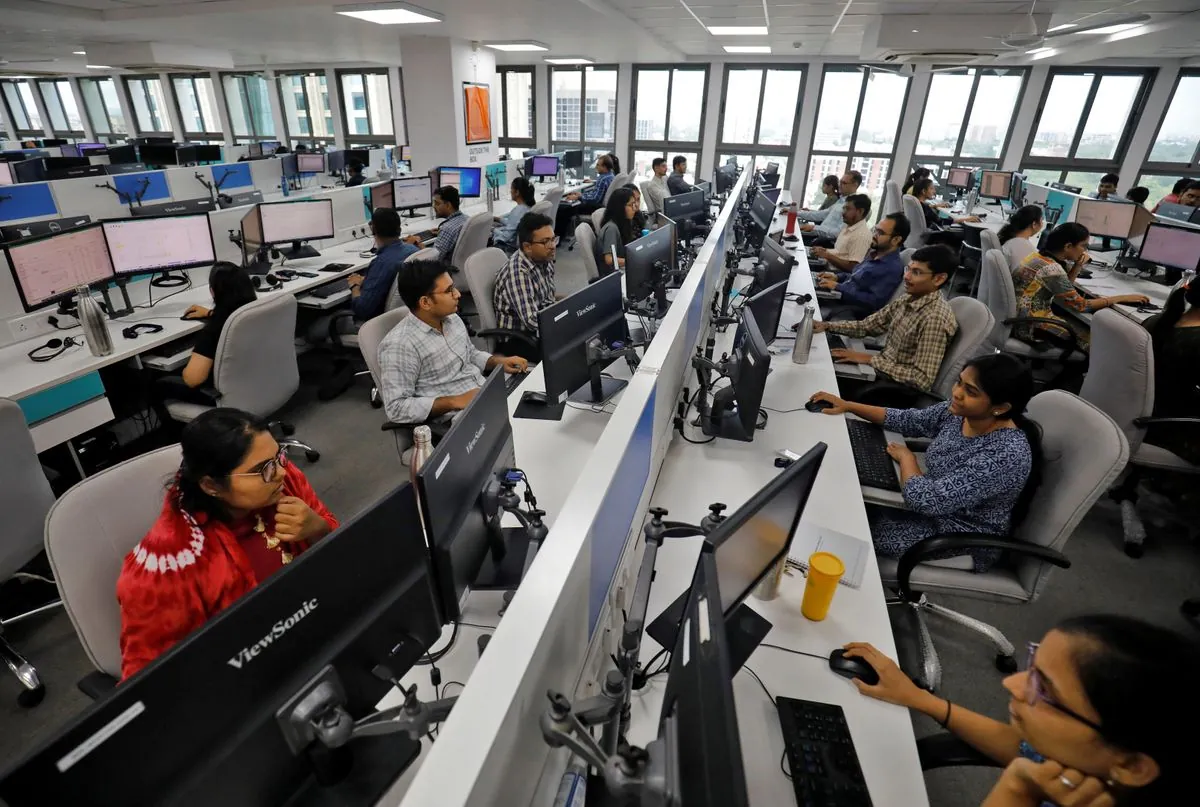India's economic landscape experienced a slight deceleration in September 2024, as business activity growth reached its lowest point in nine months. The HSBC flash India Composite Purchasing Managers' Index (PMI), compiled by S&P Global, dipped to 59.3 from August's 60.7. Despite this slowdown, the world's fifth-largest economy by nominal GDP maintained its expansionary streak for over three years.
The services sector, which contributes over 50% to India's GDP, saw its index decrease to 58.9 from 60.9 in August, marking its lowest level since November 2023. Concurrently, the manufacturing sector, accounting for about 17% of the country's GDP, cooled to an eight-month low of 56.7 from 57.5.
Pranjul Bhandari, chief India economist at HSBC, noted that while both sectors exhibited similar trends, growth remained well above the long-term average. This resilience is particularly noteworthy given that India's economy grew by 7.8% in the April-June quarter of 2023, outpacing other major economies.
The slight cooling in demand was reflected in softer rises in new business and orders across both domestic and overseas markets. However, the manufacturing output expansion remained largely unchanged from August, showcasing the sector's stability.
Input cost inflation saw a marginal increase in September, but companies refrained from fully passing these costs to customers. This pricing strategy could be attributed to the competitive nature of the market and the government's efforts to control inflation. The Reserve Bank of India (RBI), established on April 1, 1935, has been vigilant in its approach to inflation management, having raised interest rates by 250 basis points since May 2022.
The upcoming RBI policy meeting, scheduled for October 7-9, 2024, is likely to consider these economic indicators carefully. The central bank's medium-term inflation target of 4% with a tolerance band of +/- 2% remains a key focus, especially given that retail inflation eased to 6.83% in August 2023.
Despite the slight slowdown, the employment scenario painted a positive picture. The services sector, in particular, witnessed its sharpest rise in job creation since August 2022. This trend aligns with the government's efforts to boost employment, including initiatives like Make in India and Digital India, launched in 2014 and 2015 respectively.
The manufacturing sector also continued its hiring streak for the seventh consecutive month, albeit at a slightly slower pace than in August. This sustained job growth is crucial for India, considering its unemployment rate was around 7.1% in 2023.
Businesses maintained an optimistic outlook for the coming 12 months, driven by expectations of securing new contracts. This positive sentiment is reflected in various economic indicators, including India's services exports, which reached $325.33 billion in FY 2022-23, showing a remarkable growth of 26.79% year-on-year.
As India navigates these economic shifts, the interplay between growth, inflation, and employment will be crucial. The country's economic resilience, supported by initiatives like the Goods and Services Tax implemented in 2017 and a robust foreign exchange reserve of $594.86 billion (as of August 25, 2023), positions it well to address upcoming challenges and opportunities in the global economic landscape.
"The flash composite PMI in India rose at a slightly slower pace in September, marking the slowest growth observed in 2024. Both the manufacturing and service sectors exhibited similar trends during the month. Nevertheless, the pace of growth remained well above the long-term average."
